8 min read
Blame Landlords Less and Property Managers More
Scroll through the news, and you’ll find no shortage of horror stories about landlords. But in three recent cases involving unlawfully withheld...
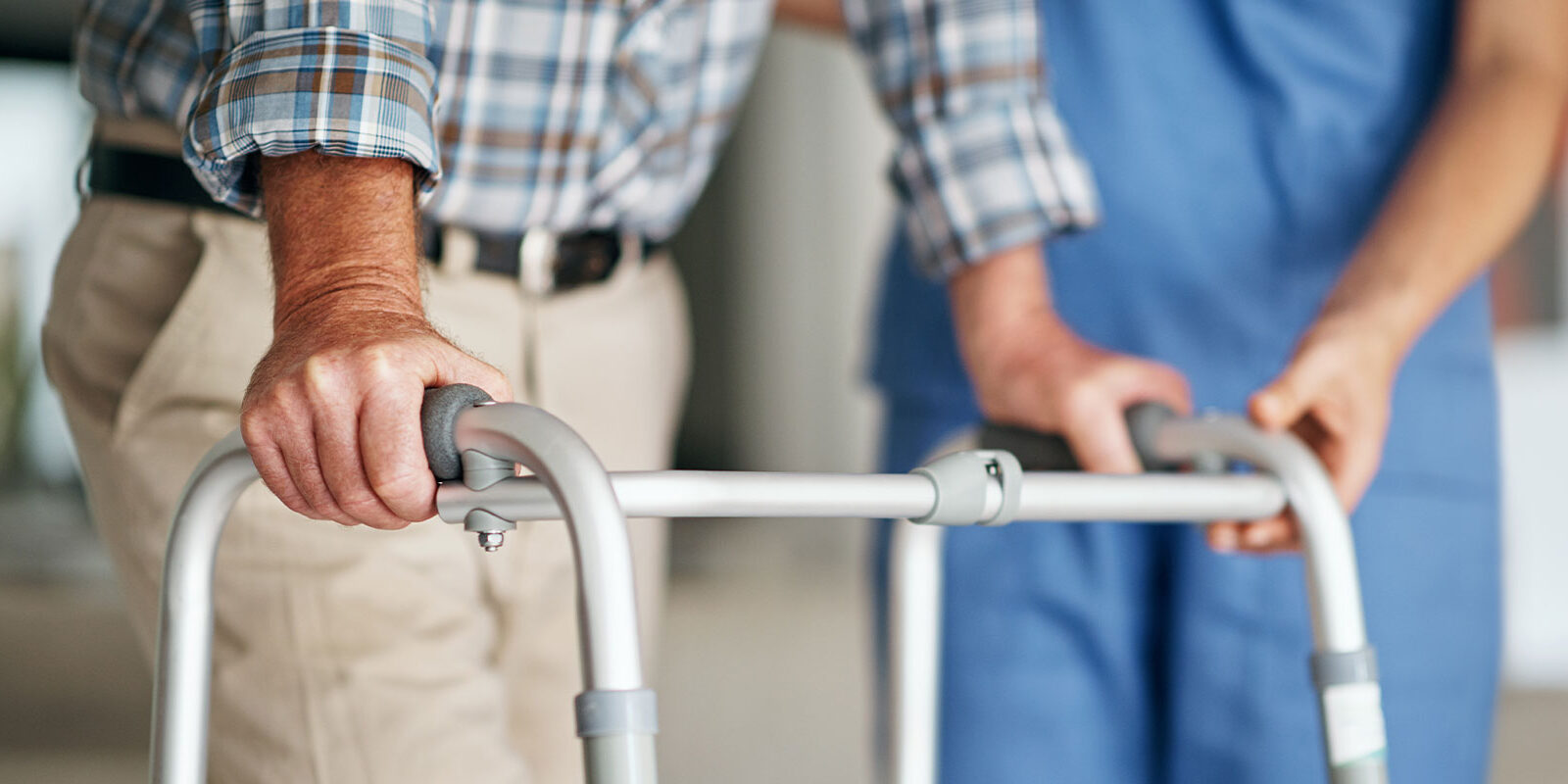
It’s no secret that many things change as you age but your level of comfort in your living space shouldn’t. Many seniors find aging in place and independent living to be more desirable than assisted living. In fact, nearly 90% of adults over the age of 65 want to age in place. Despite senior preferences to age in place or live independently, home safety for seniors is often overlooked, increasing the risk of falls or other accidents.
A study by Age Safe America found that falls account for 25% of hospitalizations and 40% of nursing home admissions for seniors. As a landlord, it’s important to accommodate your senior tenants by providing a senior-friendly rental that’s equipped with the proper modifications to ensure a safe and fall-proof living space.
Whether you’re a landlord with senior tenants or an older adult who’s living independently, check out this room-by-room guide full of safety tips to make your home as safe as possible.
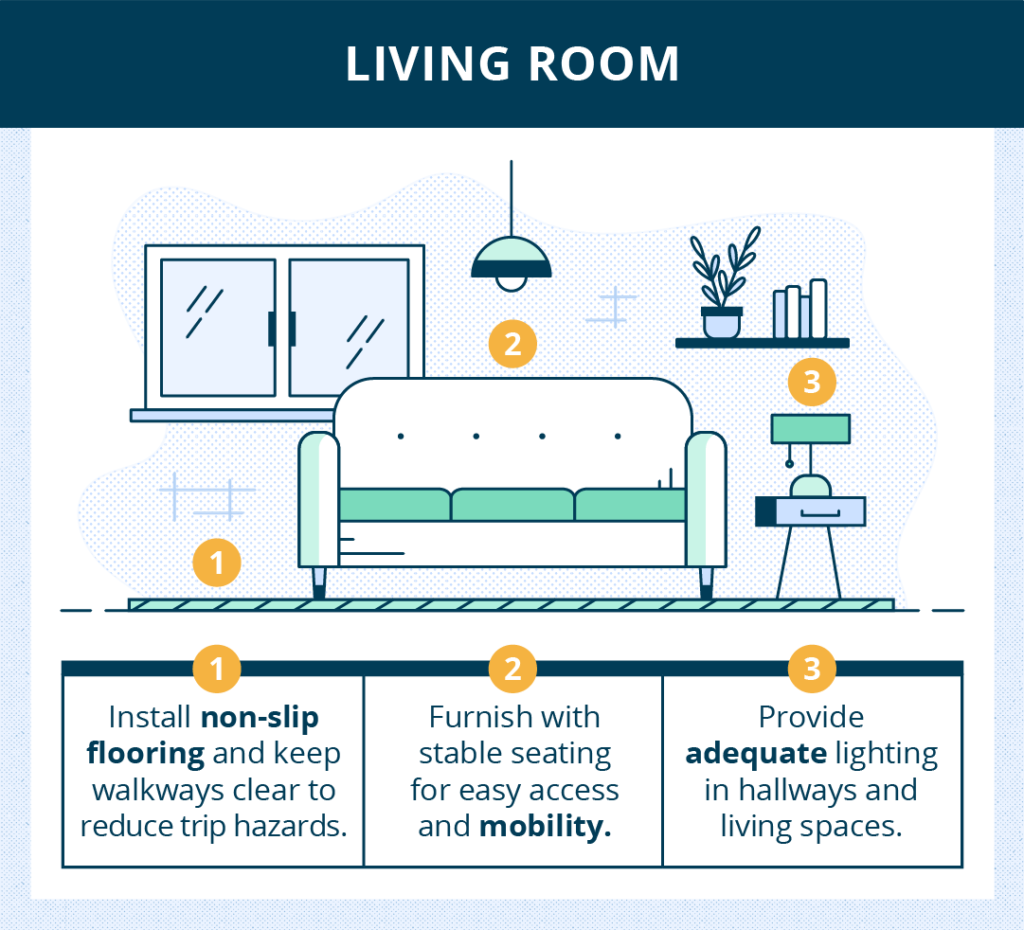
The living room is where many people spend a majority of their time in a home, as it’s a great place to relax or entertain company. With that being said, it’s important to properly equip the living room with the necessary furnishings and modifications for seniors to enjoy it with peace of mind, whether you are a landlord or tenant. Use these tips to keep your living room hazard-free.
Since falling is the leading cause of injury for seniors, it’s crucial to remove anything that could cause a trip. To reduce the risk of a fall and encourage home safety for seniors, incorporate the following:
Furnishing a rental with the proper seating helps keep older adults comfortable and secure. Having the right types of couches and chairs will make it easier to not only get up and down but they’ll also support joint and hip health. When furnishing, try finding seating that includes the following:
As we age, one of the first things to go is our vision. Older people need adequate lighting at home so that they can maneuver without any accidents. Below are a few lighting tips for senior safety — both landlords and tenants can keep these in mind:
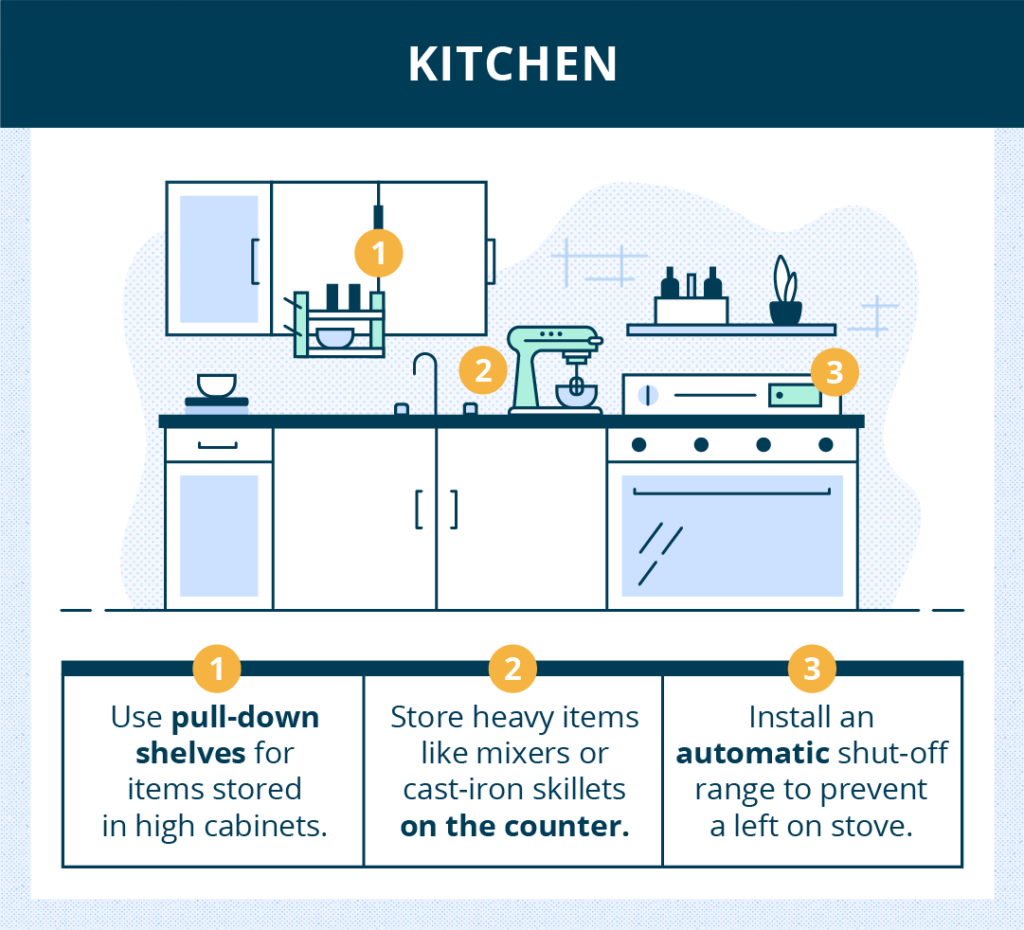
The kitchen is the heart of the home, so it’s only fitting that it receives the necessary modifications to make the room safer for seniors. Keep these tips in mind as you make renovations to your kitchen.
With decreased mobility and hearing loss, it can be harder to respond quickly in emergencies. For example, older adults face the greatest relative risk of dying in a fire. People ages 65+ are twice as likely to be injured or killed by fires than the rest of the population. However, this can be mostly prevented by taking a few extra steps:
Commonly used kitchen utensils and gadgets shouldn’t be stored in hard-to-reach places. You don’t want an elderly adult to have to strain themselves to reach a glass from the cupboard, as this could lead to injury. Organize the kitchen for easy access to these items by doing the following:
The kitchen tends to need the most regular cleaning, due to accumulated dishes in the sink and messes from meal time. However, it’s important to ensure the kitchen is easy to clean and organized often to prevent any accidents:
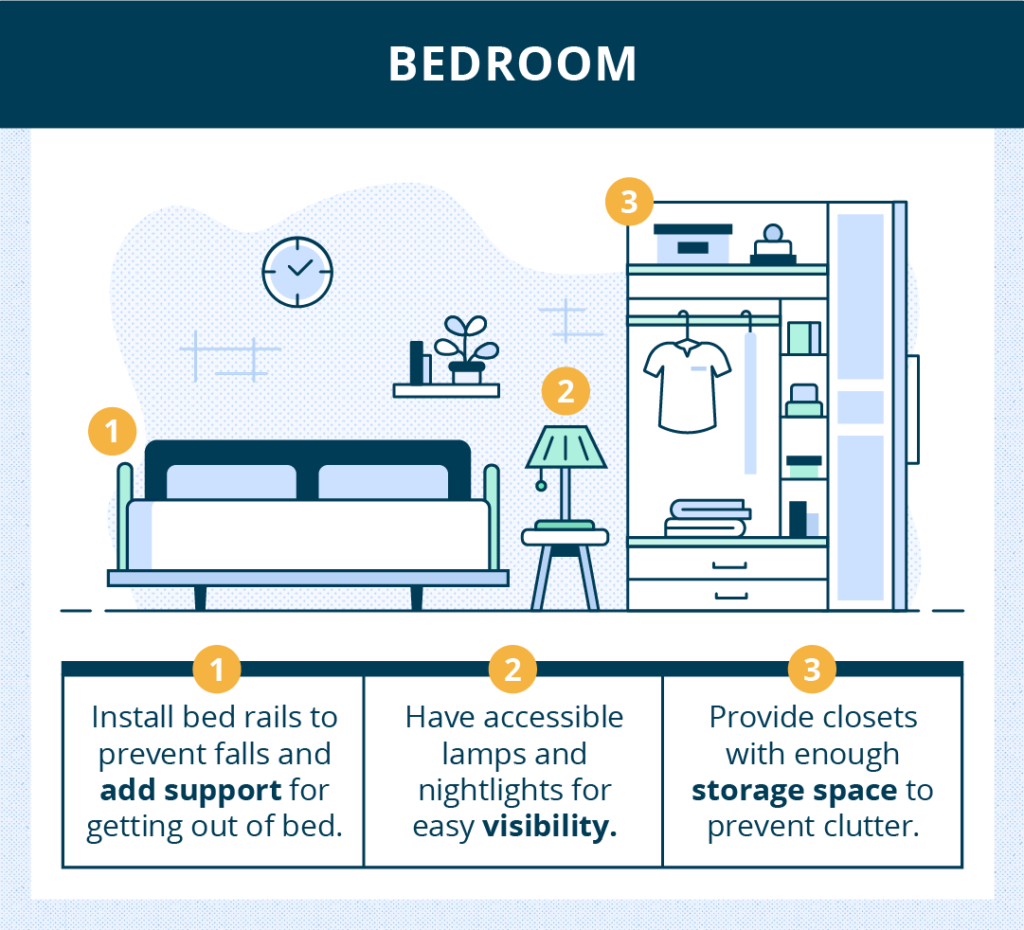
Bedrooms should not only be cozy and comfortable but also safe and secure. This space should be designed for security and ease of use so that tired seniors can enjoy their space with no complications. For starters, bedrooms should ideally be on the ground floor in case of emergencies. Use these other helpful tips to make sure the bedroom is equipped with senior-friendly accommodations.
We spend a third of our lives sleeping, so having a safe and comfortable bed to sleep in is only ideal. As we age, we need more than just plush mattresses and cozy bedding. Proper bed modifications to help get in and out of bed are necessary for aging adults so incorporate the following adjustments below:
Since the bedroom is a place for rest, having enough accessible lighting is a must-have so you don’t have to maneuver through the dark. Not only do you want lamps next to the bed but you’ll also need light throughout the room just in case you have to get up in the middle of the night. To make sure you have plenty of accessible lighting, consider the following:
As a senior, it’s only natural to have accumulated a number of belongings and keepsakes. Closets sometimes become over-crowded with items and clutter which could be dangerous. To ensure you have a safe closet, try the following:
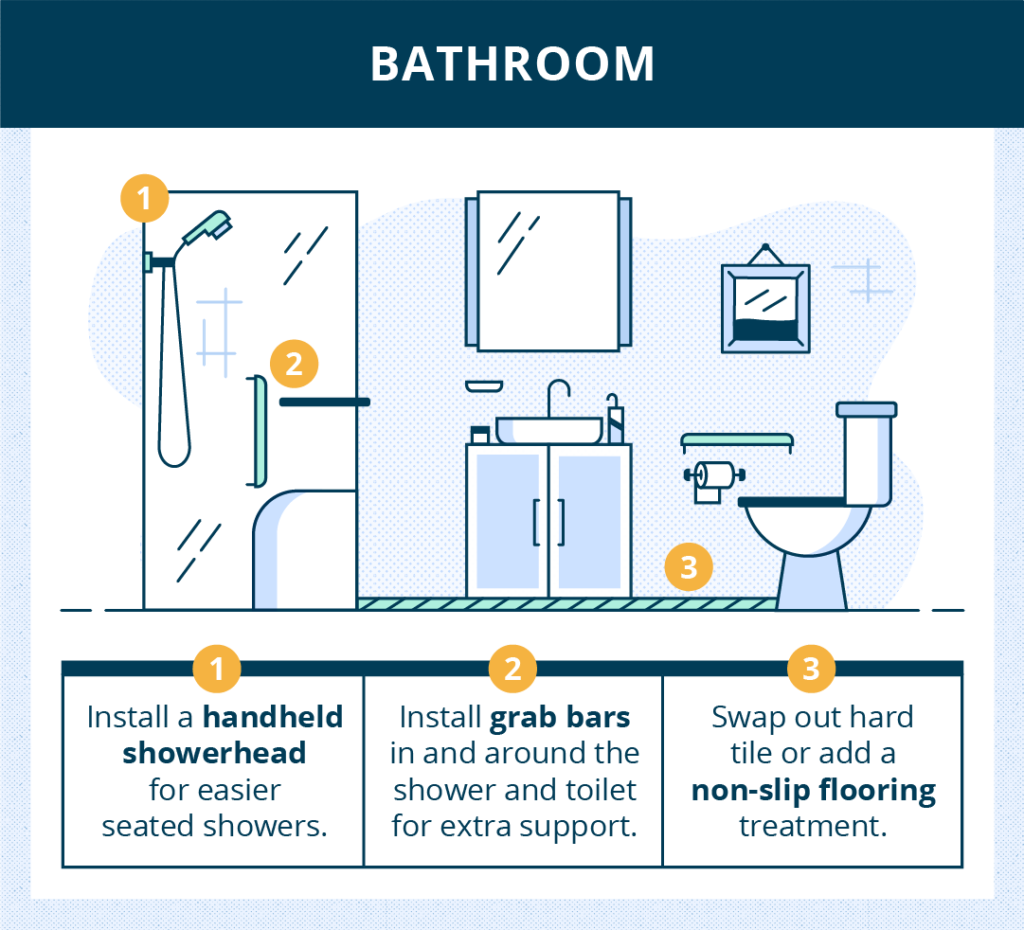
The bathroom is where a senior is most vulnerable to falls, since it’s easy for there to be an accidental slip. Use these helpful tips to make sure your bathroom is modified to encourage home safety for seniors.
The shower is one of the first places to modify in a bathroom for an older adult. There are plenty of water-heating and safety modifications to consider so keep the following in mind for a fall-proof shower or bathtub:
Having items for extra support and stability in an older adult’s bathroom is always a plus. Towel racks aren’t designed to support a person’s weight, so it’s important to install grab bars and extra seating for those who need support or have a hard time standing for long periods of time. Incorporate the following in your bathroom:
In a bathroom, it’s expected for the floor to get wet. This becomes a huge slip hazard that should be addressed for senior tenants. To prevent falls, incorporate the following:
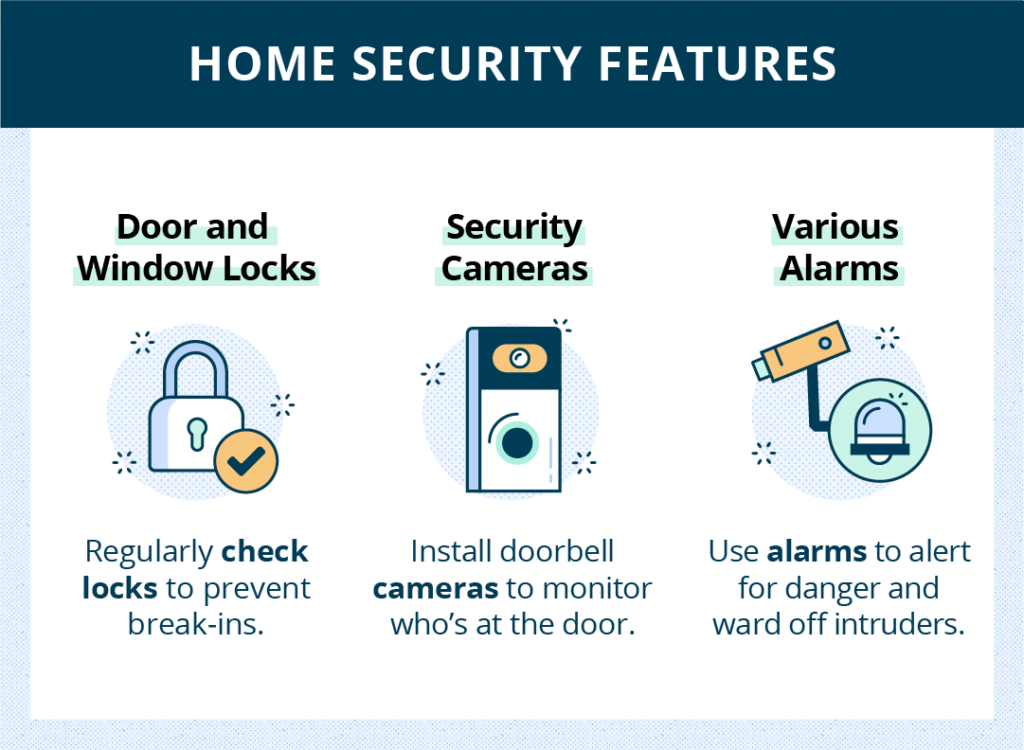
Not only are seniors at risk of falls but they’re also targets for potential abuse. It’s important to make sure your rental is not only fall-proof but secure as well. Ensure your tenants are safe from burglary or abuse by installing some of these home security features.
You’ll want to regularly check locks on all doors and windows to prevent any break-ins to a rental unit. This is especially important for seniors who are more vulnerable to abuse or could be easily taken advantage of. Secure locks not only help with safety but they can also help regulate temperatures to help keep older adults more comfortable.
Being able to monitor what’s going on around your property is important for not only you but your elderly tenants and their caregivers. A doorbell camera is a great option for seniors as it offers a way for them to monitor who is visiting their home without having to get up.
Setting up various alarms around a rental unit for seniors can help alert them of any potential dangers. Smoke detectors, carbon monoxide sensors, and burglary alarms are all great examples of alarms that should always be installed but especially for seniors. Motion detector lights are also great for warding off any potential burglars or intruders who may try to steal from or harm an older tenant.
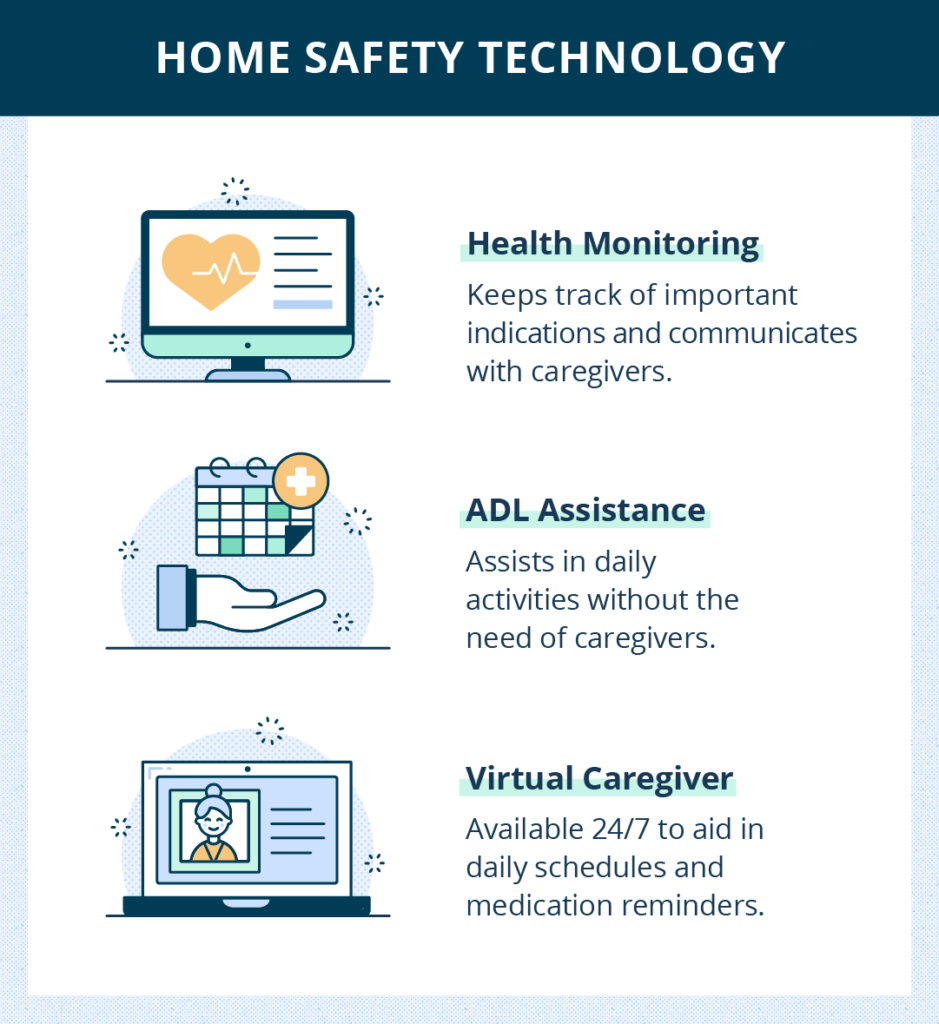
There are many advanced safety features you can add to a rental unit that will not only entice more tenants but also increase your property’s value. Consider adding in some of these home safety technologies to your unit to aid in senior home safety and care.
As a landlord, it’s important to ensure that your rental is well secured and free from any hazards for elderly tenants who are at risk of falling. However, as safe and fall-proof as your rental may be, accidents can still happen.
If you’re on-site and your elderly tenant doesn’t have a caregiver, you may be the first point of contact. In this case, it’s important to first and foremost remain calm and do your best to assist your tenant however you can.
If your tenant is seriously injured (e.g., a broken bone, bleeding, etc.), call 911 and keep your tenant as comfortable as possible until help arrives. Even if they aren’t seriously injured and are able to get up, it’s important to immediately alert their doctor that they’ve had a fall.
Having emergency contact information is necessary, especially for tenants with a high fall risk. If you’re an independent senior living in a rental, make sure to provide your landlord with an emergency contact form so information is easily accessible in an emergency.
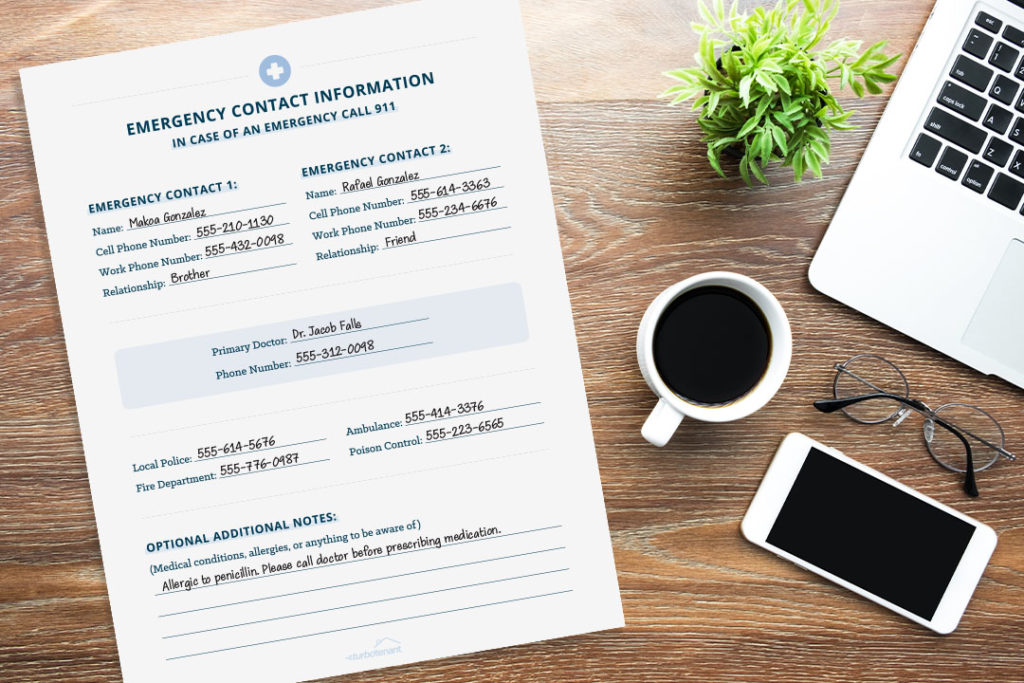
Once a senior has planted roots in a rental unit they love, the chances of them moving to another property in the near future are slim. By providing a rental unit that encourages home safety for seniors, you’ll not only entice more tenants to your property but you’ll also improve the longevity of them living there which is great for your long-term rental.
Whether you fall-proof your current rental or invest in an ADU like a granny pod, you’ll be providing more options for potential senior renters. Visit our rental application and tenant screening pages to learn how you can find the perfect tenant for your property.
8 min read
Scroll through the news, and you’ll find no shortage of horror stories about landlords. But in three recent cases involving unlawfully withheld...
9 min read
Like it or not, credit dictates a lot in our lives, and your tenants may want to get some recognition for their on-time...
14 min read
Staying compliant with IRS rules for rental property is a non-negotiable piece of the landlord puzzle. As we all know, Uncle Sam expects full transparency from...
Join the 750,000+ independent landlords who rely on TurboTenant to create welcoming rental experiences.
No tricks or trials to worry about. So what’s the harm? Try it today!
TurboTenant, Inc., © 2025
Created in Sunny Colorado